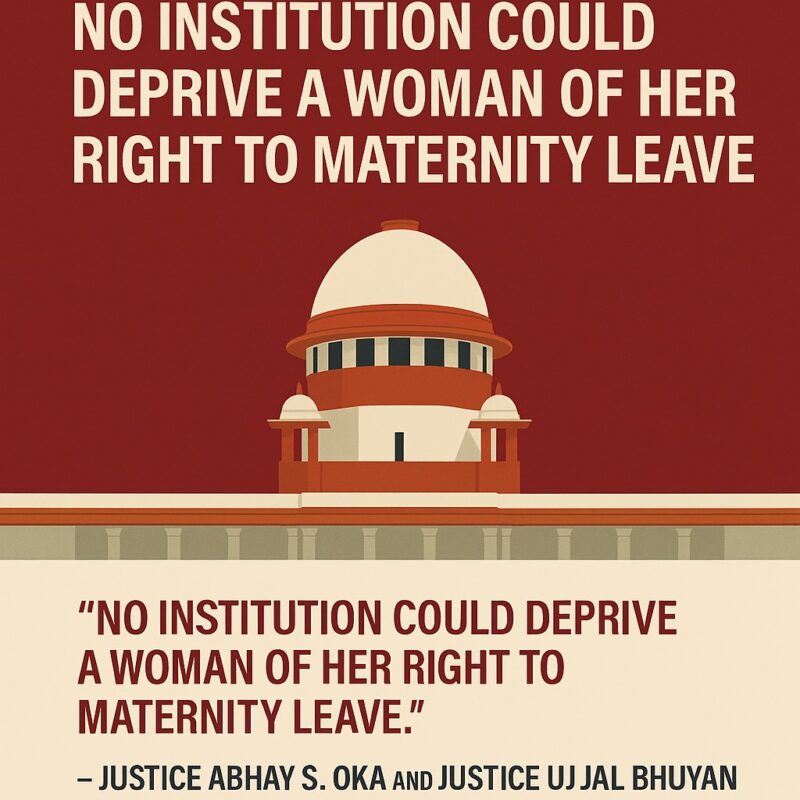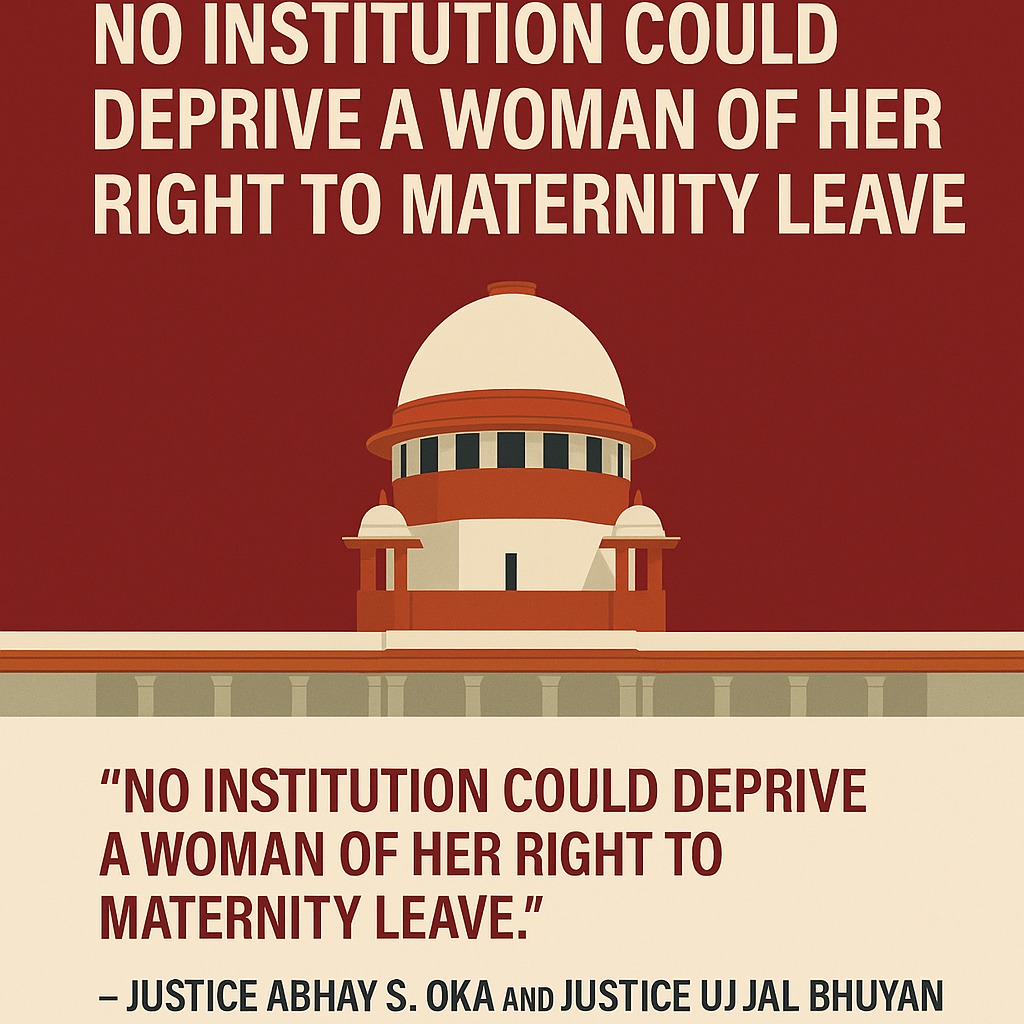Introduction
On May 23rd, 2025, the Supreme Court ruled landmark decision on the indispensability of the right to maternity leave for all women in India, irrespective of their marital status. The court also upheld that it is against fundamental rights to refuse maternity leave on the grounds of marital history, even if this was meant to favor the working mother. This ruling not only guarantees the strengthening of safeguards for women but also underscores that motherhood must never be at the expense of professional security.
What is the history of maternity leave laws in India?
Greater safeguards for working mothers have been offered over the years as India’s maternity leave legislation has progressed significantly. A brief timeline follows:
Early Developments – The “Maternity Benefit Act, 1961” was the earliest systematic legislation providing paid maternity leave to women employees in establishments with 10 or more workers. Twelve weeks of leave were provided, consisting of six weeks before and six weeks after delivery.
Key Amendments –
In 2017, the Maternity Benefit (Amendment) Act increased maternity leave from 12 weeks to 26 weeks for women who have less than two children. For women with more than two children, the leave continued to be 12 weeks.
The amendment also added 12 weeks of maternity leave for commissioning and adoptives (those availing surrogacy).
It made ‘crèche facilities’ mandatory in companies with 50 or more employees, providing childcare assistance to working women.
Recent Developments—The Supreme Court’s May 23, 2025, ruling upheld maternity leave as a fundamental right and stressed its link with “reproductive autonomy and dignity”. The Court held that maternity benefits are to be made available irrespective of marital history, assuring greater protection to women at work.
India’s maternity leave legislation has advanced far, but debate goes on regarding further enhancements, including “paternity leave policies” and improving enforcement of current maternity benefits.
What do you think this ruling will mean for the future of maternity benefits in India?
This ruling could be a turning point for maternity benefits in India, clearing the way for increased inclusivity and greater workplace protections for women. It not only guarantees economic security for working mothers but also asserts their reproductive autonomy and dignity, making maternity leave an absolute right rather than an entitlement.
In the future, this judgment could lead to policy enhancements, including improved enforcement of maternity leave benefits, stronger paternity leaves policies, and reforms in workplaces to make them more family-oriented. It could also serve as a precedent for women’s employment-related protections overall, providing equitable opportunities in all industries.

Conclusion
This ruling could be a turning point in India’s maternity benefits, opening the doors to wider access and more robust workplace protections for women. It not only provides economic security for working mothers but also asserts their reproductive dignity and autonomy, making maternity leave an inviolable right, not a privilege.
Going forward, this decision may motivate policy reforms, including improved enforcement of maternity benefits, more effective paternity leave policies, and labor reforms making the workplace more family-friendly. It may also establish a precedent for other protective measures related to employment for women, making fair opportunities across sectors a guarantee.
About the author
Agnimitra is a law student at the Department of Law, Hazra Campus, Calcutta University, Kolkata, with a growing passion for legal writing and research. Deeply interested in Intellectual Property Law, International Law, and issues related to Women and Child Safety, Agnimitra enjoys exploring how the law modernizes itself to the changing times of society. Whether it’s through writing articles or diving into legal debates, Agnimitra is always eager to understand and share the evolving nuances of the legal world.

